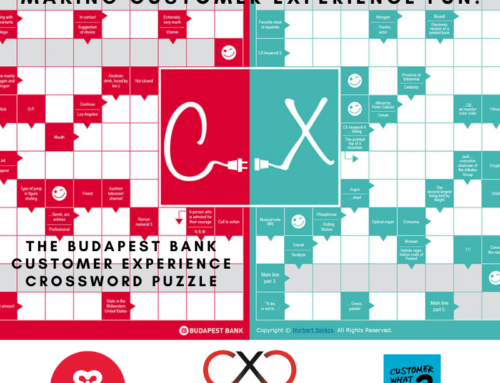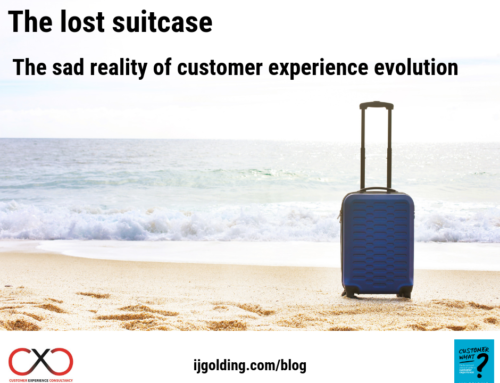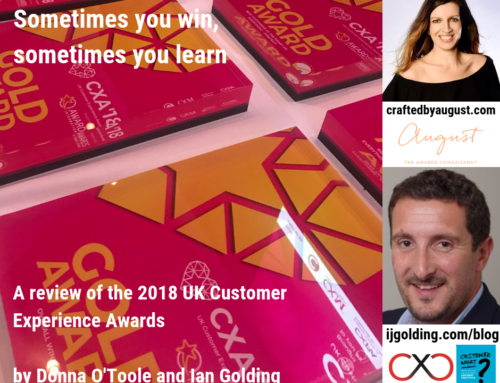
Who knows how catchphrases take off? Many TV celebrities have them, and for this blog, I am shamelessly going to steal one from the great Rolf Harris (pictured) – brilliant artist and musician who hails from Australia, but has spent most of his life in the UK. For those of you who do not know Rolf, or his famous catchphrase, I will briefly explain. When I was younger, Rolf used to host a children’s TV show called ‘Rolf’s Cartoon Club’. Rolf would sit in front of an easel, and start to draw/paint a picture. The challenge was to try to guess who the picture was of before he would complete the picture – hence ‘can you guess what it is yet?’. Once the picture (of a cartoon character) was complete, the viewing audience would get treated to a cartoon of the character Rolf had just drawn.
So why is a customer experience specialist blogging about an Australian artist drawing cartoon characters? Well let’s come back to the catchphrase ‘can you tell what it is yet?’. Let me ask some questions – have you ever wondered what the company you work for really stands for? Do you always know what to expect from a company you interact with for the first time? Do you ever question whether or not your organisation has reached a consensus on how to treat customers? These are all questions that I have asked myself in the past. These are all questions that we often struggle to answer when working for organisations who have not fully developed their customer experience strategies – or in other words, are not clear exactly what their brand(s) stand for in the eyes of their customers.
Let me use an example to develop the point I am making. My example is of a brand that excels at making it clear what they are and what they stand for – Virgin. I am currently reading Sir Richard Branson’s book – Like a Virgin. It is a fascinating read – a book I could quote from all day. Sir Richard (if I can be so personal) very simply states what all his brands stand for:
‘innovative, fun and quality service at a great price’
Every Virgin brand is founded on the same simple principles – if an idea does not align to this, the idea will not be launched. As a customer, it is pretty simple to know what you are going to get with Virgin, whether it be a train ticket to Glasgow, a flight to New York, or an annual pass to a health club. The branding is the same, the level of service is the same – it is remarkably consistent. You can tell very quickly that it is Virgin. As an employee it is very clear that you are working for an iconic brand. What Sir Richard has ensured is that every Virgin employee (although he thinks far too much of them to call them ’employees’) understands what the business proposition is. They know what Virgin is and stands for, they know what the character of the brand is, and they understand what the customer service principles of the brand are. It is really not complicated.

What Sir Richard has also excelled at is recognising that for a brand to be truly great, and to offer a fantastic experience, it needs to offer something different to its competitors:
‘Apple, like Virgin, must now fight to retain all the cultural elements that will keep it as nimble as its competitors not morph into one of the ponderous giants it managed to overcome.’
This quote refers to the innovative evolution of the Apple and Virgin brands – brands that have fought to maintain their innovation and principles, irrelevant of how big and successful they have become. The reason for this is that their nimbleness has become the reason why customers keep coming back to them. Their nimbleness have enabled them to develop serious brand and customer experience WOW moments. It is the WOW moments that makes them so successful. I did not realise that when Virgin Atlantic was launched, Upper Class (their version of business class) offered a complimentary door to door limousine service. Virgin could offer this because they were so small. Their competitors could not – they were too big. The limousine service was a big WOW moment that is still in place today – and unrivalled by Virgin’s competitors.

It is not suprising that Sir Richard mentions Steve Jobs in his book. Not surprising because there are so many similarities between the two men. Like Sir Richard, Steve Jobs was another shining example of a genius business leader who absolutely understood his brand. Steve Jobs knew what Apple was, stood for, and where it needed to go. Steve Jobs would never compromise on this. Steve Jobs would make decisions that would make the old-fashioned traditional ‘bean’ counting business leader shake and quake in his/her boots. Steve Jobs was so determined to do what he knew was right for his customer, he was even fired for being so ‘maverick’. On his return to the business, Steve Jobs created one of the biggest success stories in the corporate world. Steve Jobs took a brand that was dying, and created a brand that everyone around the world recognises. The essence of its products and its services was clear for the world to see. It is interesting to see what will happen to Apple now he has sadly passed away. Will his successor be such a stickler for maintaining the brand proposition, or will the numbers men come back in to take control?
Steve Jobs and Richard Branson created brands underpinned by cast iron principles. If you ask anyone you meet today, ‘do you know Apple and Virgin, and do you know what they stand for?’ – most people will be able to answer you. If you ask another question, ‘do you know why people buy things from their brands?’, you will almost certainly get a good response as well. Now ask the same questions of other brands – it is not appropriate for me to name any – but how many brands will you perform the test on where you are unable to answer the questions?
Not many of us are lucky enough to work in a business led by a Richard Branson or a Steve Jobs. If you are in a business where you do not know the reasons why customers keep transacting with you, or you do not have clarity on what your brand stands for, you will not be able to deliver a consistently good customer experience. By working with all of the relevant key stakeholders in your organisation, ensure that you create a CUSTOMER EXPERIENCE STRATEGY, and ensure that it is linked to the overall business strategy. Make sure that everyone knows what the brand proposition is, and what makes your brand different to the competition – detail the WOW moments that will keep your customers coming back to you, time and time again. It will really make a difference – just ask Sir Richard.
Your comments are very welcome on this, or any other of my blogs.






Hi Ian,
Alignment in businesses is often lacking, this is why I love this video https://www.ted.com/talks/lang/en/simon_sinek_how_great_leaders_inspire_action.html showing the power of Why. Why do we do what we do. Most businesses can say What they do and How they do it, many cannot say Why they do it….!
Heather
Many thanks for sharing this Heather. As always, it is very much appreciated.